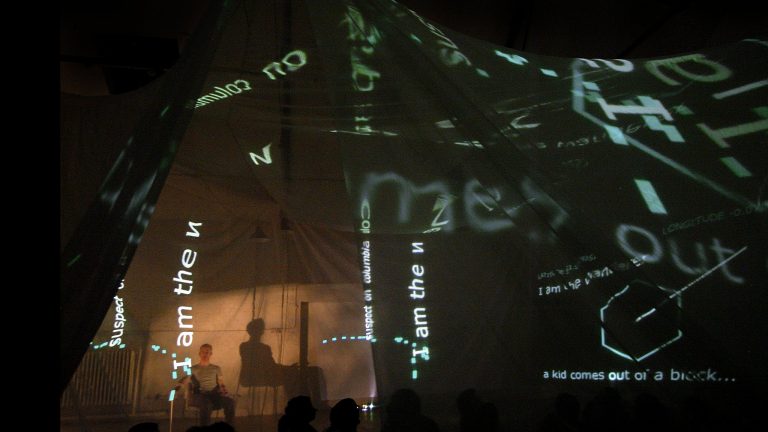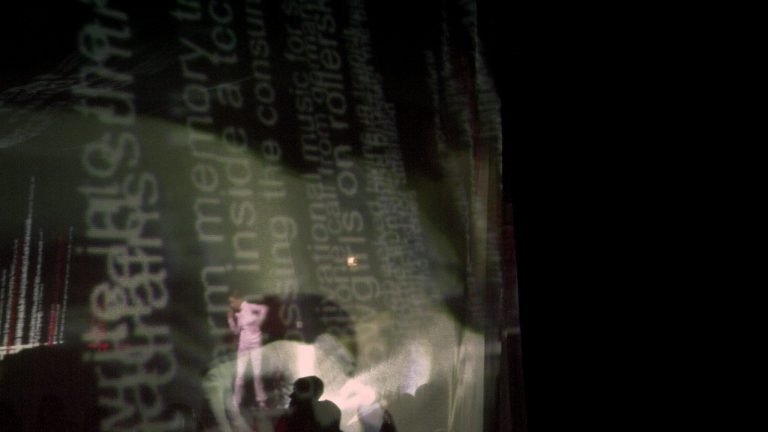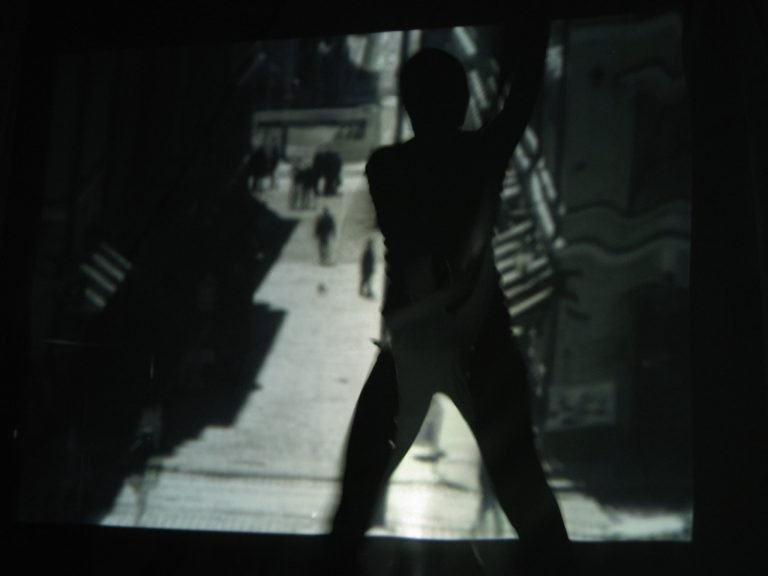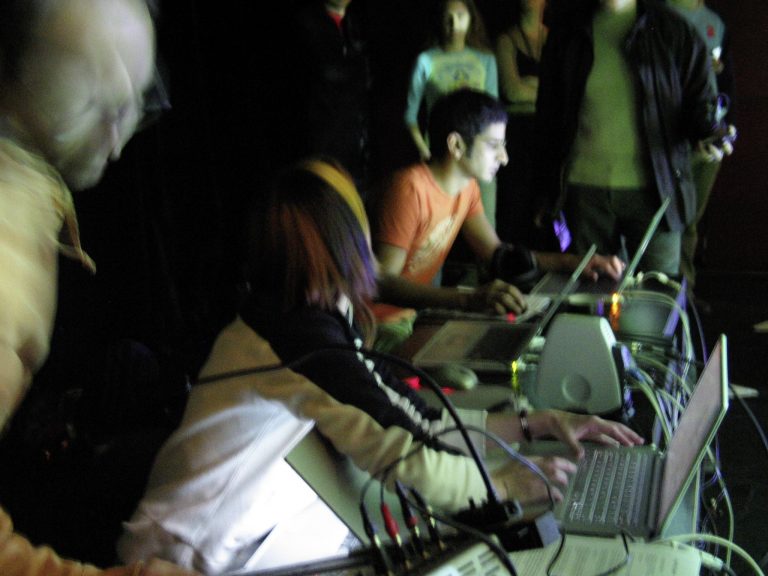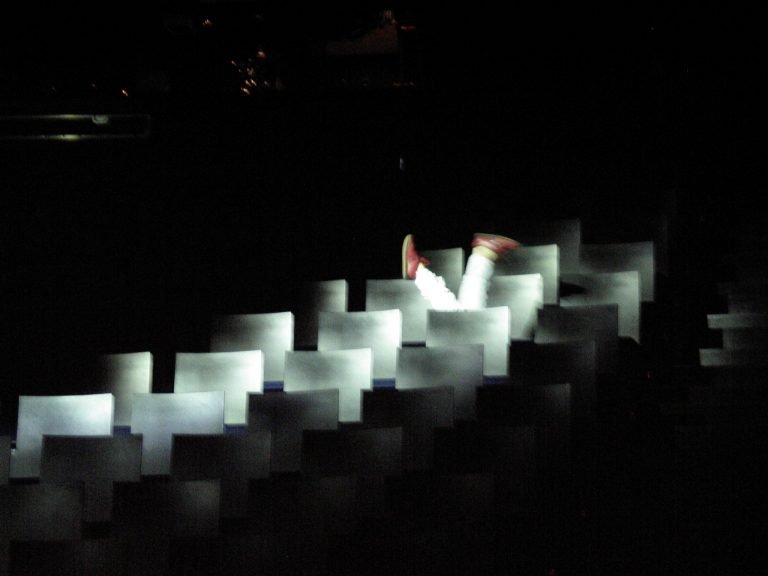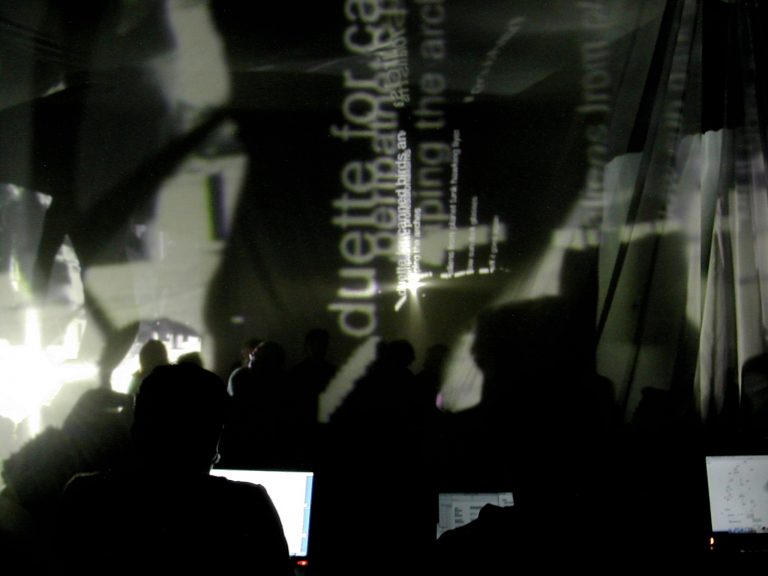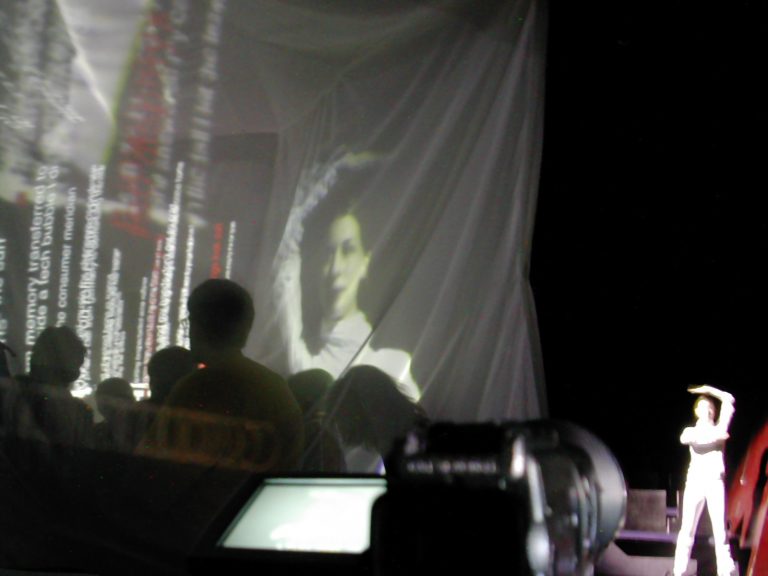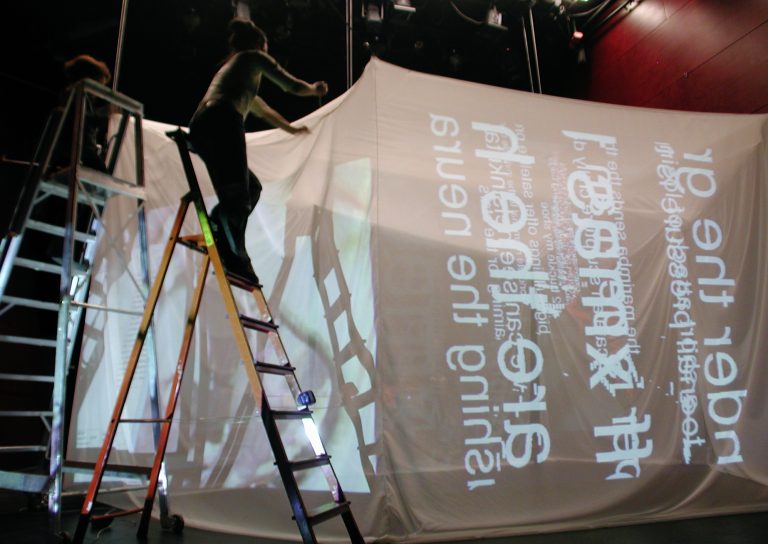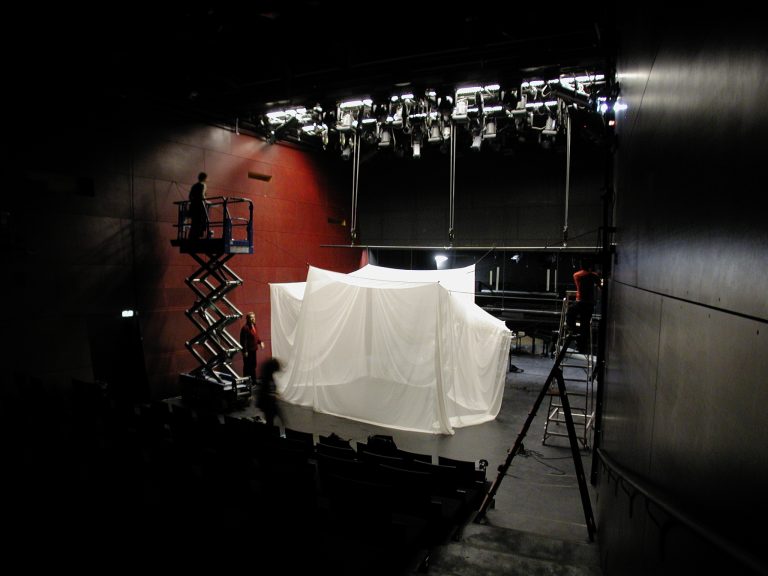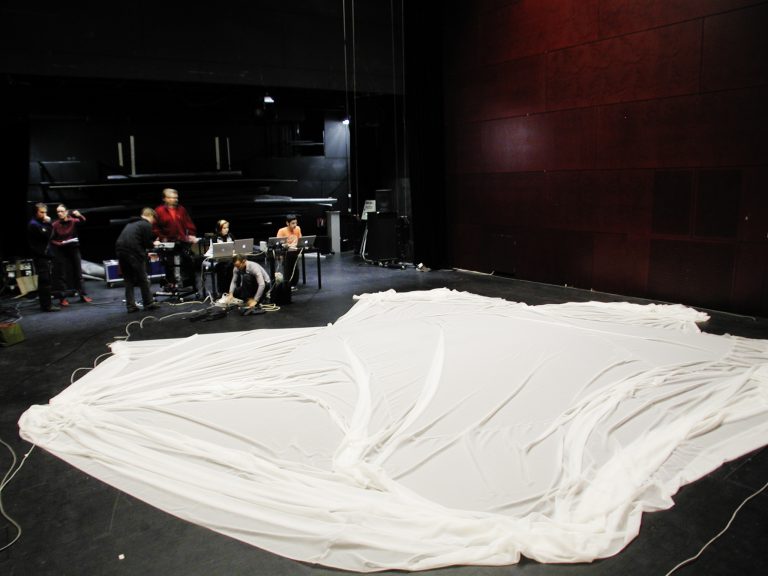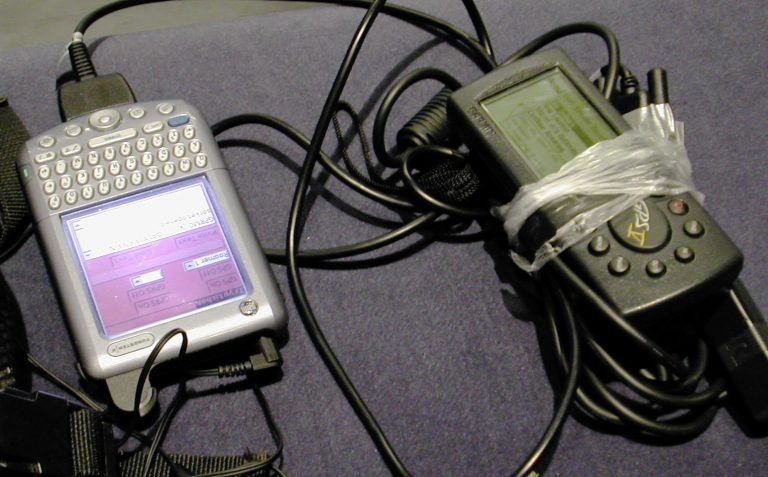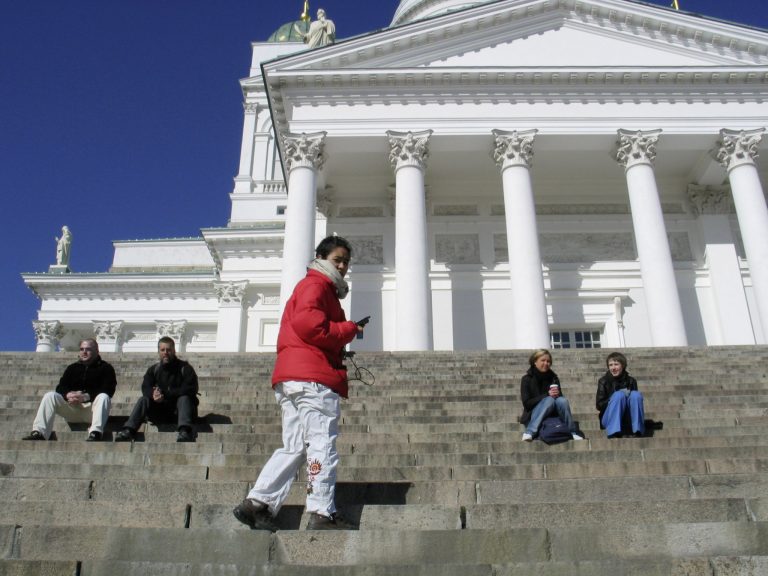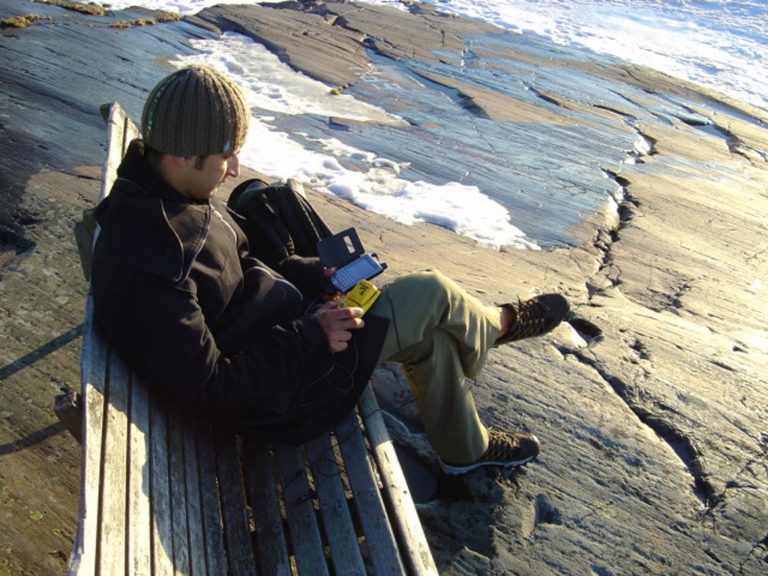myriorama / tryptichon
UNDER CONSTRUCTION
MYRIORAMA
Once upon a time …
… in the kingdom of Myriorama, there ruled a king who knew the art of reading and bending the thoughts of his people over great distances, which rendered him famously powerful. One day, a wanderer enters the kingdom …
Taking a hint from Italo Calvino’s story A King Listens, Myriorama unfolds the world of one whose environment is all ears and all eyes; one for whom every whisper and rumour is heard distinctly, for whom every movement is watched and logged.
Today, equipment designed for a paranoid king has become the plaything of the people, part of our everyday gadgetry and woven in the fabric of the city. For this production, Luksch/Patel (London-based hub ambientTV.NET) and Montreal-based dance company kondition pluriel have repurposed location-aware mobile devices, motion sensors and audio-visual transmissions to fashion a responsive performance space that both extends beyond, and is concentrated in the venue itself.
The protagonist at the centre of Myriorama tracks his subjects, agents and avatars as they move through the city. The one in the place of the king watches, commands and interprets a mediated world, a domain of data, a screen of projected subjectivities in which inside and outside are entwined.
‘We have demonstrated the ability to selectively deny GPS signals on a regional basis, particularly when our national security is threatened.’ (Lt. Jeremy Eggers, 50th Space Wing, Schriever AFB, Colorado)
Myriorama explores position- and motion-tracking at widely different scales: across the city, and inside the venue. The wanderer’s location in the city is reported by satellite-based Global Positioning System (GPS), and fed into the venue’s local network via a cellphone network (GPRS) and the internet. Inside, the data are manipulated and transformed in real time by the dancer’s gestures, using a wireless sensor system.
The emergence of cellphones, GPS, and other location-aware devices seems to favour the local and contextual over the global. However, most of the communication networks that these devices operate in remain centralised and closed.
The widespread availability of accurate position data has triggered a wave of media art and activist works focused on novel cartography; many of these are process-based or involve public participation. The term locative media encompasses all such works that use position-fixing mobile technologies. Some works are being appropriated by the ‘creative industries’, especially gaming. But locative media, as informed, for example, by the Situationist International, can also be a locus of resistance.
myriorama: a picture made up of several smaller pictures, drawn upon separate pieces in such a manner as to admit of combination in many different ways, thus producing a great variety of scenes or landscapes.
further writing in: Ambient Information Systems, ed. Luksch/Patel, London 2006. p224-236
performances: Project Market Silwex House, London 2004, ISEA Kiasma Theatre Helsinki 2004
credits and interview: click read more
read more
…
TRyPTiCHON
dance performance for locative media environments
dance / sound / video performance within a live locative media environment, shown at pixelACHE festival, Kiasma Theatre Helsinki, DMZ London.
TRyPTiCHON takes place in a triangular space between Helsinki’s Parliament House, Tuomiokirkko [the Lutheran Cathedral] and Kiasma Theatre. Steps are a prominent feature of these buildings and are used as the spatial context for the piece.
After visitors of TRyPTiCHON are settled in the Kiasma, the roaming performer (Gavin) leaves on a journey, during which he writes texts in one of three modes: internal space (my world), shared space (our world), external space (their world). These modes could also be described in terms of verb conjugation as 1st person, 2nd person, 3rd person. The roamer’s written messages are tagged with positional data (latitude and longitude as reported by GPS) and sent to the control desk at Kiasma, where the data is visualised and sonified in an intimate surround-AV environment. Meanwhile, a dancer interprets and narrates the three modes of physical and emotional space through her movement. The live data feed from the roamer is juxtaposed with archived data from other walks in the same neighbourhood, performed over the PixelAche week by other roamers.
From the epicentre within the projection tent, the audience experiences their physical and social environment in multiple layers fed by the roamer and dancer conduits.
Our setup consists of a GPRS-enabled PDA, a GPS unit, G4 laptops running Max, a PA and projectors.
TRyPTiCHON uses a custom programmed server which receives TCP messages from the GPS-enabled handheld device via GPRS and translates them into the OSC (Open Sound Control) protocol, a protocol that can be understood by applications such as MAX/MSP/Jitter and Supercollider.
The TRyPTiCHON server translates the following data from the GPS units into OSC:
* UserID: to distinguish the roamers
* PerformanceMode: each roamer sees the neighbourhood from three different perspectives (modes), writes at various locations, and tags the text with the mode being used.
* Longitude & Latitude: The position of the performer
* Speed: Speed of the performer
* Course over Ground
TRyPTiCHON dance performance for a live locative media environment
by manu / mukul / muth. with: Hanna Ylitepsa (choreography and dance). Gavin Starks (roaming narrator). Camalo Gaskin (costume and projection tent design)
featuring walks through Helsinki by John Hopkins, Nick Grindell, Hermanni Ylitepsa, Voytec Mejor, Mariko Montpetit, Mikko Karjalainen and others
